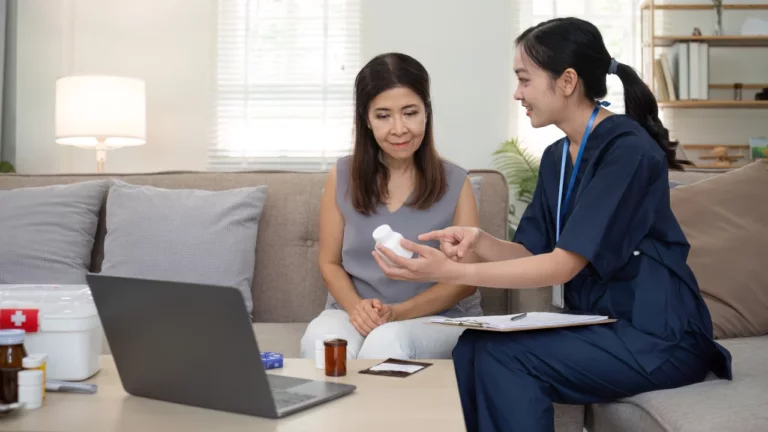The integration of wearable devices in healthcare, particularly in Remote Patient Monitoring (RPM), is changing the way we approach patient care. By enabling continuous monitoring and real-time data collection, wearable devices are helping healthcare providers to offer more personalized and proactive care, while also empowering patients to take control of their health.
The Rise of Wearable Technology in Healthcare
Wearable technology has been making waves across various sectors, and healthcare is no exception. Devices such as smartwatches, fitness trackers, and specialized medical wearables have become common tools for tracking vital signs and other health metrics. The COVID-19 pandemic further accelerated the adoption of these technologies, as healthcare systems around the world sought ways to monitor patients remotely and reduce the burden on hospitals.
A study published in Wellcome Open Research highlighted the deployment of wearable pulse oximeters in hospitals in Vietnam during the COVID pandemic. These devices allowed for continuous monitoring of patients’ oxygen levels, which was crucial for managing severe COVID-19 cases. The study found that these wearables could significantly reduce the workload of healthcare staff by automating the collection of vital signs and enabling remote monitoring (Nguyen et al., 2022).
Similarly, a report in BMJ Health & Care Informatics discussed the successful implementation of RPM programs in several hospitals. These programs included the use of wearable devices for post-discharge monitoring of COVID-19 patients, which resulted in fewer hospital readmissions and better overall patient outcomes (Mantena & Keshavjee, 2021). The use of these devices ensured that patients could be safely monitored from home, reducing the need for in-person visits and the associated risks of viral transmission.
Benefits of Wearable Devices in Remote Patient Monitoring
Wearable devices bring several key benefits to RPM:
- Real-Time Data and Proactive Care: Wearables allow for the continuous collection of data such as heart rate, blood pressure, oxygen saturation, and activity levels. This real-time data is crucial for detecting early signs of deterioration, allowing healthcare providers to intervene before a condition worsens. This proactive approach can lead to better outcomes and reduced hospitalizations.
- Patient Empowerment and Engagement: Wearables provide patients with direct access to their health data, fostering a sense of ownership and responsibility over their health. By understanding their health metrics, patients are more likely to engage in healthy behaviors and adhere to treatment plans. For example, the American Society of Clinical Oncology noted how cancer patients using wearable devices to monitor symptoms during chemotherapy experienced better treatment adherence and improved quality of life.
- Cost-Effectiveness and Accessibility: By reducing the need for frequent hospital visits and enabling early interventions, wearables can help lower healthcare costs. This is especially important in low-resource settings, where healthcare infrastructure is often limited. In a study published in Co-Production and Co-Creation, it was shown that wearable devices used in Hungary’s remote health monitoring program helped reduce the burden on healthcare providers while improving patients’ quality of life.
- Enhanced Clinical Decision-Making: The integration of wearable devices into RPM systems provides healthcare providers with comprehensive and accurate data, supporting more informed clinical decisions. The ability to track patients’ health metrics continuously allows for a better understanding of their condition, leading to more personalized care plans.
Challenges in Integrating Wearable Devices
While the benefits of wearable devices in RPM are clear, there are also challenges to consider:
- Data Management: Wearable devices generate large volumes of data, which need to be stored, managed, and analyzed effectively. Healthcare providers must develop robust systems to handle this influx of data and ensure it is used meaningfully in patient care. The Journal of Clinical Oncology discusses the importance of multidisciplinary teams—including clinicians, IT professionals, and data scientists—in managing and interpreting data from wearable devices.
- Interoperability with Existing Systems: Integrating wearable devices with existing electronic health records (EHRs) can be technically challenging. Ensuring that data flows seamlessly between devices and EHRs is crucial for providing a holistic view of a patient’s health. This requires collaboration between device manufacturers, software developers, and healthcare providers.
- Patient Compliance: The success of RPM programs depends on patients consistently wearing and using their devices as prescribed. Educating patients on the importance of regular monitoring and making the devices as user-friendly as possible are key strategies to improve compliance. As highlighted in the aforementioned BMJ Health & Care Informatics report, patient education and simple device interfaces play a critical role in ensuring adherence.
- Privacy and Security: With the continuous collection of sensitive health data, ensuring patient privacy and data security is paramount. Healthcare providers must implement strict security measures to protect patient information and comply with regulations such as HIPAA in the U.S. and GDPR in Europe.
Future Prospects for Wearable Devices in RPM
The future of wearable devices in RPM looks promising, with ongoing advancements in technology set to further enhance their capabilities. For example, artificial intelligence (AI) and machine learning are being integrated with wearable devices to provide even more personalized and predictive healthcare. These technologies can analyze vast amounts of data to identify patterns, predict health outcomes, and suggest interventions before a condition escalates.
The American Society of Clinical Oncology also points to the potential of wearable devices in the early detection of diseases. New generations of wearables are being developed to monitor biomarkers and other indicators of disease, offering the possibility of early diagnosis and treatment. This could be particularly valuable in oncology, where early detection is often crucial for successful treatment.
Moreover, as wearable devices become more advanced, they are likely to become smaller, more comfortable, and less intrusive, making them an integral part of patients’ daily lives. This will further increase patient compliance and the effectiveness of RPM programs.
DrKumo: Innovating Remote Patient Monitoring
At the forefront of this revolution is DrKumo, a leader in the development of RPM solutions that integrate wearable technology. DrKumo’s innovative approach ensures that healthcare providers have the tools they need to monitor patients effectively, whether they are managing chronic conditions, recovering from surgery, or navigating complex treatments like chemotherapy. By leveraging real-time data and advanced analytics, DrKumo empowers healthcare providers to deliver personalized care that improves patient outcomes and reduces healthcare costs.
Takeaways
The integration of wearable devices into RPM represents a significant shift in how healthcare is delivered. These devices enable continuous, real-time monitoring of patients, empowering both healthcare providers and patients to take a more proactive approach to health management.
While challenges remain, the benefits of wearable technology in RPM—ranging from improved patient outcomes to reduced healthcare costs—are undeniable. As technology continues to evolve, the role of wearables in healthcare is set to expand, offering new opportunities for enhancing patient care and transforming the healthcare landscape.
Are you ready to revolutionize patient care with the power of wearable technology? Partner with DrKumo to implement cutting-edge RPM solutions that enhance patient outcomes, reduce hospital readmissions, and streamline healthcare delivery. Contact us today to learn how we can help you integrate wearable devices into your practice.
Disclaimer: The studies and research mentioned in this blog are not conducted by DrKumo. We are citing these studies to provide insight into the integration of wearable devices in Remote Patient Monitoring. Please consult the original sources hyperlinked for detailed information.







